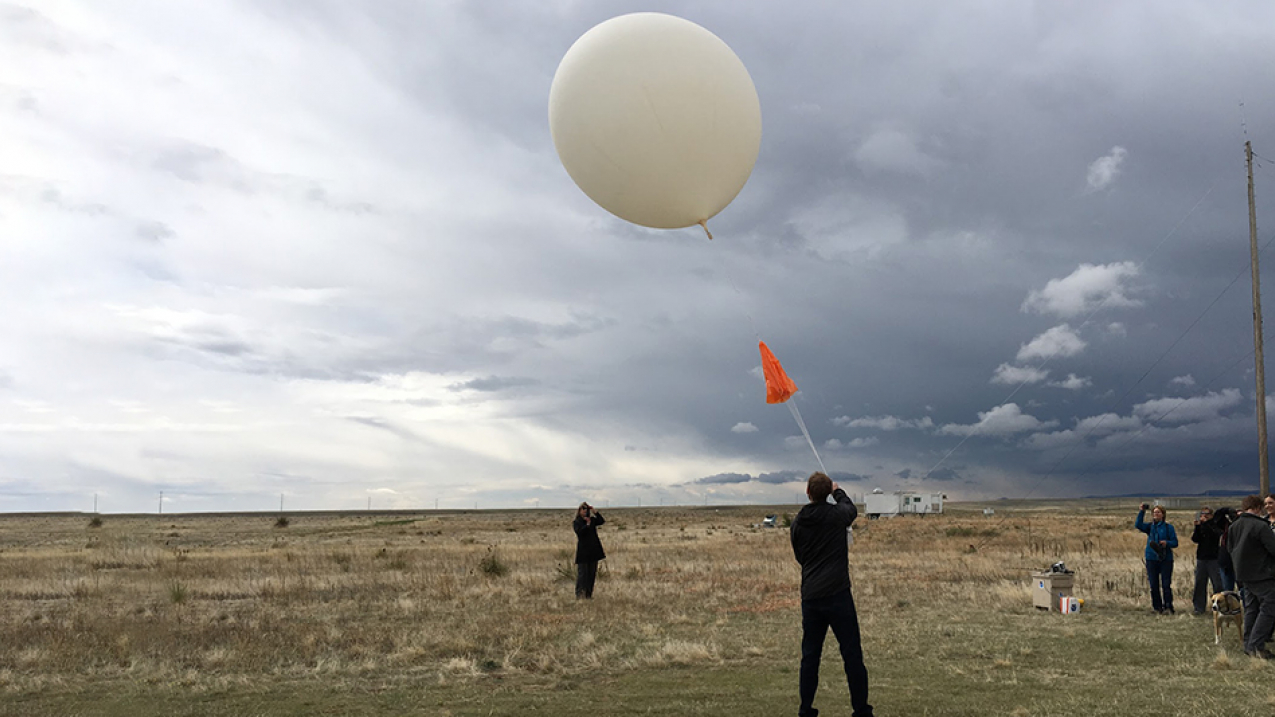
CIRES scientist Patrick Cullis releases a weather balloon carrying an ozonesonde from NOAA's Marshall Mesa on the 50th anniversary of the first ozonesonde launch from the research site near Boulder, Colorado, in 1967. (Image credit: Theo Stein/NOAA)

An official website of the United States government
Here’s how you know
Official websites use .gov
A .gov website belongs to an official government organization in the United States.
Secure .gov websites use HTTPS
A lock () or https:// means you’ve safely connected to the .gov website. Share sensitive information only on official, secure websites.

CIRES scientist Patrick Cullis releases a weather balloon carrying an ozonesonde from NOAA's Marshall Mesa on the 50th anniversary of the first ozonesonde launch from the research site near Boulder, Colorado, in 1967. (Image credit: Theo Stein/NOAA)
MARSHALL MESA, Colo. - From atop this grassy mesa in 1967, scientists with the federal Environmental Science Services Agency carefully launched a weather balloon carrying a new instrument that could measure ozone levels from the ground to the very edge of outer space — and radio the data back to a ground receiver.
What started out as a modest research project driven by scientific curiosity provided the agency that would later become NOAA with some of the first insights into how ozone, a trace gas that blocks the sun’s harmful ultraviolet rays from penetrating through the stratosphere, was distributed in the atmosphere. The instrument — an early version of today’s ozonesonde — helped NOAA develop knowledge and expertise that became vitally important when the Antarctic ozone hole was discovered 15 years later.
Read on: How one NOAA scientist turned his invention into a scientific standard.